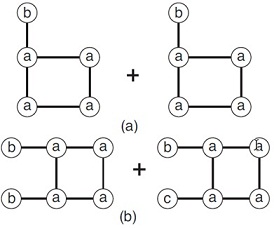Assignment
1- Consider the traffic accident data set shown in Table below.
Traffic accident data set.
|
WeatherCondition
|
Driver's Condition
|
TrafficViolation
|
Seat Belt
|
Crash Severity
|
|
Good
Bad
Good
Bad
Bad
Bad
Bad
Good
Good
Bad
Good
Bad
|
Alcohol-impaired
Sober
Sober
Alcohol-impaired
Alcohol-impaired
Alcohol-impaired
Alcohol-impaired
Sober
Alcohol-impaired
Sober
Alcohol-impaired
Sober
|
Exceed speed limit
None
Disobey stop sign
Exceed speed limit
Disobey traffic signal
Disobey stop sign
None
Disobey traffic signal
None
None
Exceed speed limit
Disobey stop sign
|
No
Yes
No
Yes
No
Yes
Yes
Yes
No
Yes
Yes
Yes
|
Major
Minor
Minor
Major
Major
Minor
Major
Minor
Minor
Major
Major
Minor
|
a. Show a binarized version of the data set.
b. What is the maximum width of each transaction in the binarized data?
c. Assuming that support threshold is 30%, how many candidate and frequentitemsets will be generated?
2- Consider the data set shown in Table below. The first attribute is continuous,while theremaining two attributes are asymmetric binary. A rule is consideredto be strong if itssupport exceeds 15% and its confidence exceeds 60%.The data given in Table below supports the following two strong rules:
(i) {(1 ≤ A ≤ 2),B = 1} → {C = 1}
(ii) {(5 ≤ A ≤ 8),B = 1} → {C = 1}
|
A
|
B
|
C
|
|
1
2
3
4
5
6
7
8
9
10
11
12
|
1
1
1
1
1
0
0
1
0
0
0
0
|
1
1
0
0
1
1
0
1
0
0
0
1
|
a. Compute the support and confidence for both rules.
S ({(1 ≤ A ≤ 2),B= 1} → {C = 1}) =
C ({(1 ≤ A ≤ 2),B = 1} → {C = 0}) =
S ({(5 ≤ A ≤9),B = 1} → {C = 1}) =
C ({(5 ≤ A ≤9),B = 1} → {C = 1}) =
3. Consider the data set shown in Table below. Suppose we are interested inextracting the following association rule:
{α1 ≤ Age ≤α2, Play Piano = Yes} → {Enjoy Classical Music = Yes}
|
Age
|
Play Piano
|
Enjoy Classical Music
|
|
9
11
14
17
19
21
25
29
33
39
41
47
|
Yes
Yes
Yes
Yes
Yes
No
No
Yes
Yes
Yes
No
No
|
Yes
Yes
No
No
Yes
No
No
No
No
Yes
Yes
Yes
|
To handle the continuous attribute, we apply the equal-frequency approachwith 3, 4, and 6 intervals. Categorical attributes are handled by introducingas many new asymmetric binary attributes as the number of categorical values.Assume that the support threshold is 10% and the confidence thresholdis 70%.
(a) Suppose we discretize the Age attribute into 3 equal-frequency intervals.Find a pair of values for α1 and α2 that satisfy the minimum supportand minimum confidence requirements.
(b) Repeat part (a) by discretizing the Age attribute into 4 equal-frequency intervals. Compare the extracted rules against the ones you had obtained in part (a).
(c) Repeat part (a) by discretizing the Age attribute into 6 equal-frequency intervals. Compare the extracted rules against the ones you had obtained in part (a).
4. For each of the sequence w = below, determine whether theyare subsequences of the following data sequence:
<{A,B}{C,D}{A,B}{C,D}{A,B}{C,D}>
subjected to the following timing constraints:
mingap = 0 (interval between last event in ei and first eventin ei+1 is > 0)
maxgap = 2 (interval between first event in ei and last eventin ei+1 is ≤ 2)
maxspan = 6 (interval between first event in e1 and last eventin elast is ≤ 6)
ws = 1 (time between first and last events in ei is ≤ 1)
a. w = <{A}{B}{C}{D}>
b. w = <{A}{B,C,D}{A}>
c. w = <{A}{B,C,D}{A}>
d. w = <{B,C}{A,D}{B,C}>
e. w = <{A,B,C,D}{A,B,C,D}>
5. Draw all candidate subgraphs obtained from joining the pair of graphs shownin Figure below Assume the edge-growing method is used to expand the subgraphs.

Format your assignment according to the following formatting requirements:
1. The answer should be typed, double spaced, using Times New Roman font (size 12), with one-inch margins on all sides.
2. The response also includes a cover page containing the title of the assignment, the student's name, the course title, and the date. The cover page is not included in the required page length.
3. Also include a reference page. The Citations and references should follow APA format. The reference page is not included in the required page length.